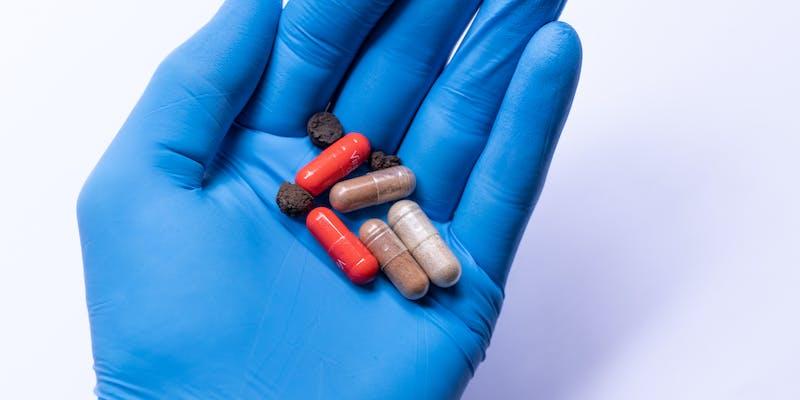The Compatibility of Iron and Magnesium Supplements
Feb 21, 2024 By Nancy Miller
A strict diet with magnesium and iron would inevitably prevent most of us from enjoying delectable foods, an unavoidable reality given our preferences. Following this, the essential components required for maximum physical performance are not consistently supplied to our bodies. Furthermore, a considerable percentage of the population experiences one or more deficiencies in vital nutrients, with the majority leaning towards the negative. Iron, folate, vitamin D, and iodine are among the most frequently omitted nutrients, despite the perhaps surprising fact that most people do not consume adequate amounts of all essential vitamins and functions minerals.
How can we, nevertheless, determine whether or not we are accomplishing our goals? Conversely, we may adjust to include more nutrient-dense foods or supplements with various vitamins. The estimated prevalence of supplement use among Americans is over 52%. One of the most practical ways to address multiple nutrient deficiencies simultaneously is by taking a multivitamin, iron, and magnesium. Taking specific nutrients simultaneously is not always prudent, even though supplementation with a multivitamin may be practical.
Magnesium
The human organism is comprised of an estimated 25 grams of magnesium metal. Magnesium fulfills a multitude of functions domestically. Muscle and nerve function includes synthesizing proteins and DNA and maintaining intracellular gradients of vital ions and functions minerals throughout the body.
Moreover, it is essential for the proper operation of many enzymes and facilitates the conversion of food into energy. Muscles and soft tissue accommodate forty percent of the magnesium content, whereas bones house sixty percent. The Linus Pauling Institute at Oregon State University lists magnesium's functions as energy production, protein synthesis, nucleic acid composition, and ion transport. Additionally, it regulates heart rate, muscle activity, and nerve activity.
The recommended daily allowances (RDAs) for magnesium are:
- From birth to six months, babies need 30 mg daily.
- Take 75 milligrams daily for 7–12-month-olds.
- Pregnant females 14–18 should take 410 milligrams daily.
- For infants 1–3 should take 130 mg.
- For kids aged 4–8, 240 milligrams is recommended daily.
- Men in their 20s and 30s recommend 360 milligrams daily for women in the same age range. Adult men aged 31–50 should take 420 milligrams daily.
- Pregnant women need 350–400 mg daily.
- Nursing staff should consume 310–360 milligrams daily.
Symptoms
The symptoms of magnesium deficiency may not manifest in many individuals until their magnesium levels reach hazardously low levels. Determining and treating preliminary stages can thus present difficulties. Magnesium deficiencies are, thankfully, somewhat uncommon.
The following symptoms may occur:
- The inability to eat
- General fatigue or an absence of vitality
- A cramping muscle
- Weakness, muscular
- Appetite loss and nausea
- Magnesium deficiency may be hard to distinguish from other medical issues when there are multiple symptoms due to their general nature.
Causes
The following factors may contribute to magnesium and hypo-magnesium deficiency:
- Increased magnesium excretion may result from calcium hypercalcemia, which has the potential to hasten the rate of magnesium elimination from the body via urine.
- Reduced magnesium consumption
- Type 2 diabetes and Crohn's disease induce severe diarrhea.
- Acid reflux medication like omeprazole.
- This includes antibiotics, diuretics, immunosuppressants, and magnesium-lowering medications.
Iron

Growth and development require iron, which hemoglobin needs. Haemoglobin in red blood cells helps the circulatory system transport oxygen around the body. Normal adult iron stores are 3–4 grams. Age and gender determine daily iron needs. Iron RDAs from the NIH Office of Dietary Supplements:
- Give 7–12-month-olds 11 micrograms daily.
- Daily doses for kids are 1-3 mg.
- From 14 to 18, men should take 10 mg daily.
- Men aged 19–50 should take 8 mg daily.
- Take 18 mg daily for 19–50-year-old women.
- Women with diabetes should take 27 mg daily.
- Healthcare professionals should take 9-10 mg daily.
- Adults over 51 should take 8 mg daily.
Iron needs vary by age and gender. National Institutes of Health Office of Dietary Supplements Iron RDAs:
- Maximum 11 micrograms per day for 7–12-month-olds.
- Administer 1-3 mg daily to kids.
- The recommended daily dose for children aged 4–8 is 10 milligrams, and 9–13 is 8.
- General recommendation: 11 mg daily for guys 14–18.
- From 14 to 18, men should take 10 mg daily.
- Men aged 19–50 should take 8 mg daily.
- Take 18 mg daily for 19–50-year-old women.
- Women with diabetes should take 27 mg daily.
- Healthcare professionals should take 9-10 mg daily.
- Adults over 51 should take 8 mg daily.
Symptoms
Iron deficiency anemia often starts late. The patient may not realize they have the ailment until symptoms increase. When situations change, like giving birth, an iron shortage may disappear. If you have iron deficiency anemia symptoms, visit a doctor. These symptoms may indicate iron deficiency:
- Overall illness
- Fainting or dizziness
- Profound fatigue
- Fast heartbeat
- Weak, easily damaged nails
- Fairer than average
- Chest discomfort
- Trouble breathing
- Mental issues
- Cold extremities
- Tongue inflammation or discomfort
- Wants sand, sugar, or ice
- Missing meals, especially in children
- Desires for unwholesome substances, including sludge, cornmeal, or frozen solids
- Nutritional deficiency, particularly in minors
Causes
Anemia caused by an iron deficiency is not a separate condition. On the contrary, the etiology of iron deficiency differs. Common causes include the following:
- Insufficient iron intake
- Loss of blood
- Poor iron absorption
- Pregnancy
- A poor diet
- Low-iron diets cause iron deficiency.
Are Magnesium and Iron Supplements Compatible?

Unlike OTC drugs with warning labels about drug interactions, nutrient supplements work invisibly. Despite popular belief, being safe does not mean being in harmony with nature. Combining iron and magnesium is usually safe. When choosing magnesium, be careful.
According to the evidence at hand, iron might undergo an interaction with specific antacids, including magnesium oxide 8. Magnesium oxide inhibits iron absorption, as the researchers discovered, by decreasing the pH and generating macromolecular polymers. Nevertheless, the available evidence regarding the potential dangers or contraindications associated with iron and other magnesium supplements is limited.
However, it is important to consider iron and other functions minerals in particular. Co-administering iron and magnesium supplements may impede absorption and restrict body storage due to iron's interactions with other nutrients despite the absence of an explicit interaction between the two elements. The following factors specifically influence the lack of iron and magnesium:
- High zinc concentrations suppress iron absorption.
- Elevated fiber intake reduces the absorption of magnesium.
- Functions minerals and vitamin D facilitate the absorption of calcium.
- A vitamin A deficiency can exacerbate iron-deficiency anemia by disrupting iron metabolism.
- Calcium depletes the absorption of heme and non-heme iron.
- Insufficiency of zinc may worsen iron deficiency anemia.
- Insufficiency of copper hampers iron absorption.
- Heavy metals, including cobalt, manganese, copper, zinc, and iron, obstruct iron absorption via the intestinal absorption pathway.







